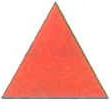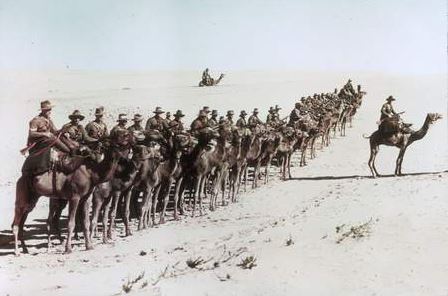Difference between revisions of "Imperial Camel Corps"
From Our Contribution
(→Unit Personnel) |
(→Unit Personnel) |
||
| (9 intermediate revisions by the same user not shown) | |||
| Line 37: | Line 37: | ||
===Unit Personnel=== | ===Unit Personnel=== | ||
| − | '''Holding Unit''' | + | '''Holding Unit & Reinforcements''' |
* [[Alfred George Allanson]] 16 May - 20 Dec 1917 | * [[Alfred George Allanson]] 16 May - 20 Dec 1917 | ||
| + | * [[Albert Edgar Chuck]] ?? Oct - 11 Dec 1917 | ||
| + | * [[Henry Arthur Grinsell]] 15 Mar 1917 - 22 Aug 1917 | ||
| + | * [[Herbert Stanley (Bert) Jones]] 1 - 20 Sep 1916 | ||
| + | * [[John George (Jack) Keenan]] 31 Jul - 22 Aug 1917 | ||
| + | * [[William Renfrey Thomas]] 23 May 1917 - 5 Jun 1917 | ||
| + | * † [[Cyril Augustus Tonkin]] 1 Nov 1916 - 8 Mar 1918 | ||
| + | |||
'''1st Camel Corp Battalion''' | '''1st Camel Corp Battalion''' | ||
| + | * [[Herbert Stanley (Bert) Jones]] 21 Sep 1916 - 3 Apr 1917 | ||
| + | * [[Victor Henry Jones]] 10 Aug - 10 Nov 1916 | ||
| + | * [[John George (Jack) Keenan]] 31 Jul 1917 - 30 Jun 1918 | ||
| + | * [[William Renfrey Thomas]] 10 Aug - 11 Nov 1916 | ||
| + | |||
'''3rd Camel Corp Battalion''' | '''3rd Camel Corp Battalion''' | ||
| + | * [[Herbert Stanley (Bert) Jones]] 4 Apr 1917 -30 Jun 1918 | ||
| + | * [[Victor Henry Jones]] 11 Nov 1916 - 30 Jun 1918 | ||
| + | * [[Patrick O'Flaherty]] 1 Jul 1916 - 30 Jun 1918 | ||
| + | * [[William Renfrey Thomas]] 11 Nov 1916 - 23 May 1917 & 6 Jun 1917 - 30 Jun 1918 | ||
'''4th (ANZAC) Camel Corp Battalion''' | '''4th (ANZAC) Camel Corp Battalion''' | ||
* [[Alfred George Allanson]] 21 Dec 1917 - 16 Jun 1918 | * [[Alfred George Allanson]] 21 Dec 1917 - 16 Jun 1918 | ||
| + | * [[John Arthur Butcher]] 5 May 1916 - 16 Jun 1918 | ||
| + | * [[James Smith Dean]] 2 Nov 1916 - 27 Mar 1918 WIA | ||
| + | * [[Henry Arthur Grinsell]] 23 Aug 1917 - 8 May 1918 | ||
==Battle Honours== | ==Battle Honours== | ||
Latest revision as of 19:20, 21 August 2024
 1st Camel Corp Battalion | |
 3rd Camel Corp Battalion | |
 4th (Anzac) Camel Corps Battalion | |
 AWM B1627 | |
Contents
Brief History
The first units of what became the Imperial Camel Corps (ICC) were four company-sized formations that conducted long-range patrols around the Suez Canal and the Sinai Desert. The companies were raised in Egypt in January 1916 from Australians returning from the failed Gallipoli Campaign.
The only truly mounted infantry troops in this theatre of operation. The International Camel Brigade consisted of four infantry battalions made up mostly of Gallipoli veterans. It had 18 Infantry Companies, each consisting of six officers and 169 other ranks. Ten of the companies were Australian, six were British and the remaining two were from New Zealand. In total they numbered about 2,800 men, over three times the size of a Light Horse Brigade, and they were supported with 36 Lewis guns, eight Maxim Guns, and six small-calibre 9-pounder guns. They rode camels to reach the enemy before dismounting and fighting on foot as conventional infantry.[1]
The lighter Egyptian camel became the mount chosen for carrying troops. The camels could cover an average distance of 3 miles (4.8 km) an hour, or 6 miles (9.7 km) an hour trotting, while carrying a soldier, his equipment, and supplies. The camel companies consisted of a small headquarters and four sections, each of seven groups of four men. The establishment of a company was 130 men, all armed with Lee–Enfields, the standard British bolt action rifle of the time.
Each company added a machine-gun section of fifteen men with three Lewis guns; the company headquarters also received extra staff. All this increased company strength to 184 men. The four companies were expected to operate as independent units that travelled by camel but then dismounted to fight as infantrymen. Following the practise of cavalry and mounted infantry units, one man of each group of four held the camels when the team was in action, which reduced a team's firepower by a quarter. However it was soon discovered that camels were not as nervous as horses when faced with artillery and rifle fire, and one man would look after twelve to sixteen camels once the troopers had dismounted.
In March 1916, after two months of training, the first camel patrols left their depot at Abassi on the outskirts of Cairo to patrol the Libyan Desert. Around the same time long-range patrols, each of about thirty men, went into the south and south-east of the Sinai desert to detect any Ottoman incursion into the area. When the patrols discovered Ottoman outposts, the brigade organized a company-strength raid against the outposts.
Around the same time long-range patrols, each of about thirty men, went into the south and south-east of the Sinai desert to detect any Ottoman incursion into the area. When the patrols discovered Ottoman outposts, the brigade organized a company-strength raid against the outposts. The Egyptian Expeditionary Force (EEF) went over to the offensive in the Sinai Desert in August, winning the Battle of Romani. In support of these operations in December the brigade moved into the Sinai; their first large battle came during the Battle of Magdhaba on 23 December.
On 9 January 1917 the ICC was involved in another victory during the Battle of Rafa, which forced the Ottomans to withdraw the Sinai outposts towards Gaza. in May the EEF consolidated the now-surplus companies into a new unit, the 4th (ANZAC) Battalion.
Early in 1918, the ICC moved to the area of the Jordan valley and took part in the attack in March and April. The First Battle of Amman was unsuccessful as after three days of battle the British were unable to break through the Ottoman defences around the city and had to withdraw. The 4th (Anzac) Battalion did succeed in capturing Hill 3039 overlooking the city and managed to hold out for twenty-four hours.
When the EEF advanced out of the Sinai and into Palestine, the change in terrain led to the disbandment of the ICC, with the men transferring to the 14th and 15th Light Horse Regiments in the newly formed 5th Light Horse Brigade.
Unit Personnel
Holding Unit & Reinforcements
- Alfred George Allanson 16 May - 20 Dec 1917
- Albert Edgar Chuck ?? Oct - 11 Dec 1917
- Henry Arthur Grinsell 15 Mar 1917 - 22 Aug 1917
- Herbert Stanley (Bert) Jones 1 - 20 Sep 1916
- John George (Jack) Keenan 31 Jul - 22 Aug 1917
- William Renfrey Thomas 23 May 1917 - 5 Jun 1917
- † Cyril Augustus Tonkin 1 Nov 1916 - 8 Mar 1918
1st Camel Corp Battalion
- Herbert Stanley (Bert) Jones 21 Sep 1916 - 3 Apr 1917
- Victor Henry Jones 10 Aug - 10 Nov 1916
- John George (Jack) Keenan 31 Jul 1917 - 30 Jun 1918
- William Renfrey Thomas 10 Aug - 11 Nov 1916
3rd Camel Corp Battalion
- Herbert Stanley (Bert) Jones 4 Apr 1917 -30 Jun 1918
- Victor Henry Jones 11 Nov 1916 - 30 Jun 1918
- Patrick O'Flaherty 1 Jul 1916 - 30 Jun 1918
- William Renfrey Thomas 11 Nov 1916 - 23 May 1917 & 6 Jun 1917 - 30 Jun 1918
4th (ANZAC) Camel Corp Battalion
- Alfred George Allanson 21 Dec 1917 - 16 Jun 1918
- John Arthur Butcher 5 May 1916 - 16 Jun 1918
- James Smith Dean 2 Nov 1916 - 27 Mar 1918 WIA
- Henry Arthur Grinsell 23 Aug 1917 - 8 May 1918
Battle Honours
Their Battle Honours were inherited by the 15th Light Horse Regiment.
- Egypt 1915–17
- Romani
- Magdhaba-Rafah
- Gaza-Beersheba
- El Mughar
- Nebi Samwill
- Jerusalem
- Jaffa
- Jericho
- Jordan (Es Salt)
- Jordan (Amman)
- Palestine 1917–18
Individual Honours
3rd Australian Camel Battalion
- 6 Military Crosses
- 6 Distinguished Conduct Medals
- 12 Military Medals
- 23 Mentioned in Despatches
- 1 foreign award
12th Australian Camel Company
- 1 Mentioned in Despatches
Imperial Camel Corps
- 2 Military Crosses
- 2 Distinguished Conduct Medals
- 3 Military Medals
- 6 Mentioned in Despatches
- 8 foreign awards
Notes
Content for the history and battle honours sections was came from a combination of Wikipedia and the Australian War Memorial websites.
- ↑ The Charge - The AUstralian Light Horse victory at Beersheba. David W. Cameron.Viking Press. page 9.